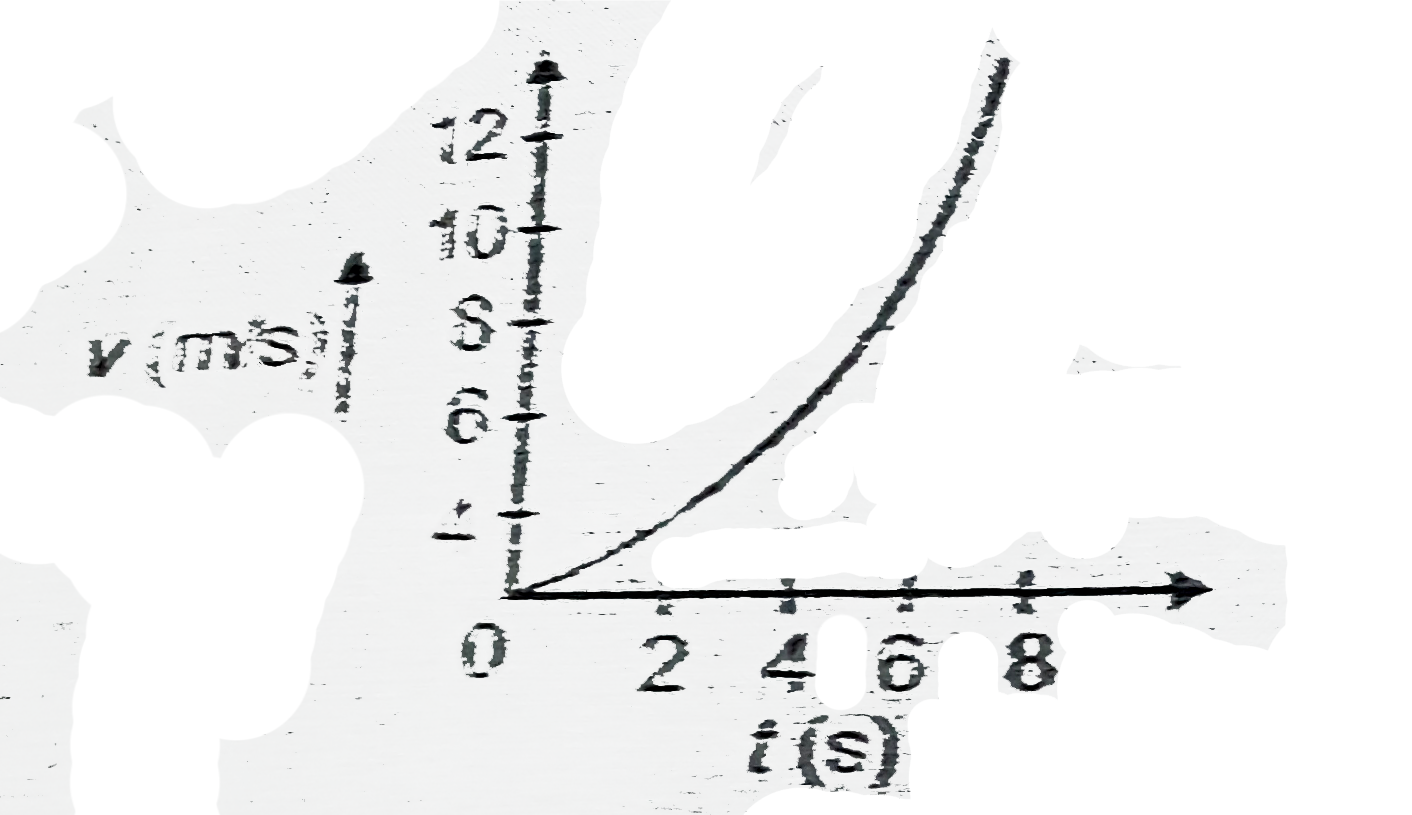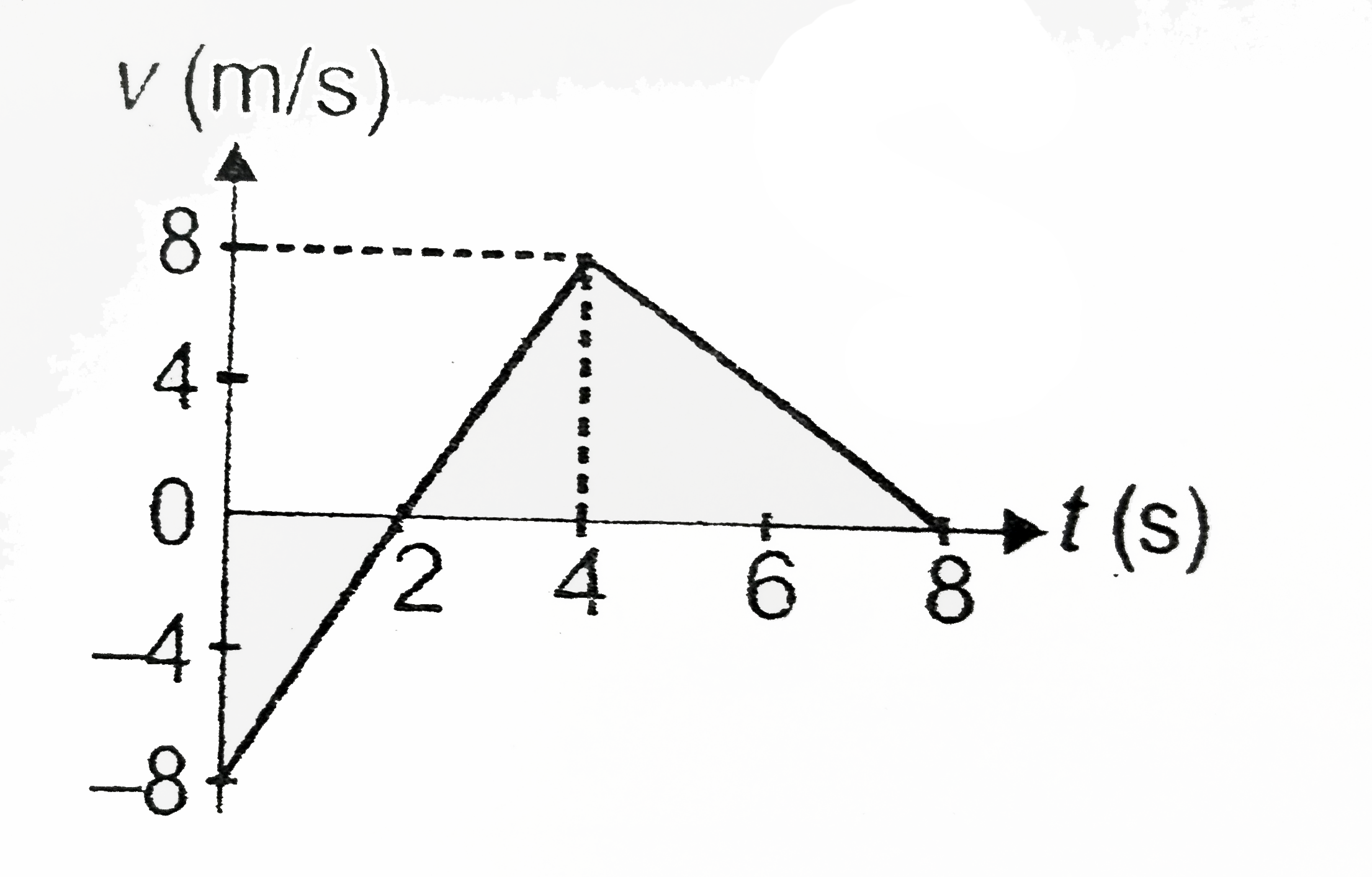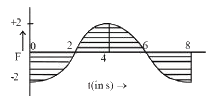Between what times did the object have a non-zero acceleration? A 0 s only B 0 s to 8 sC 0 s to 5 s D the object was not accelerating at any time E 5 s to 8 s
Correct option E 5 s to 8 sA non-zero accleeration is inidcated by a curve in the line.
Related Solutions
For objects spaced cut in time s=t^3 -6t^2 + 6t+8 Is. When the acceleration is 0 then the velocity is .......
View SolutionThe velocity-time graph of an object is given below. Calculate the average acceleration of the object in the time interval of 4 s to 6 s.

View SolutionThe velocity-time graph of an object is given below. Calculate the average acceleration of the object in the time interval of 4 s to 6 s.
View SolutionThe acceleration of a particle depends on displacement covered in a time as . It is given that initially and , then which of the following is possibly correct ?
View SolutionThe position of a particle varies with time according to the relation , where x is in m and t is in s. Find
(i) Displacement during time interval t = 1 s to t = 3 s.
(ii) Average velocity during time interval 0 - 5 s.
(iii) Instantaneous velocity at t = 0 and t = 5 s.
(iv) Average acceleration during time interval 0 - 5 s.
(v) Acceleration at t = 0 and t = 5 s.
View SolutionThe position of a particle varies with time according to the relation , where x is in m and t is in s. Find
(i) Displacement during time interval t = 1 s to t = 3 s.
(ii) Average velocity during time interval 0 - 5 s.
(iii) Instantaneous velocity at t = 0 and t = 5 s.
(iv) Average acceleration during time interval 0 - 5 s.
(v) Acceleration at t = 0 and t = 5 s.
View SolutionThe velocity of an object at t =0 is m/s . It moves in plane with constant acceleration . What is its velocity after 1 s?
View SolutionThe velocity of an object at t =0 is vecv_(0) =- 4 hatj m/s . It moves in plane with constant acceleration veca = ( 3hati + 8 hatj) m//s^(2) . What is its velocity after 1 s?
View SolutionWhich will require more force - An object of mass 2 kg will have to move 5 m/s. s^(2) or in accelerating an object of mass 4 kg by 2 m/s. s^(2) In accelerating the rate of?
View Solutionacceleration of an object from rest 8" m/s"^2 it happens. Calculate the distance covered by the object in 1 s.
View SolutionFind the average velocity in the time intervals (a)0 to 2s,(b)0 to 4s, (c) 2s to 4 s, (d)4 s to 7 s , (e) 0 to 8 s. Find instantaneous velocity at (a) t=1.0s (b) t=3.0s (c) t=4.5 s (d) t=7.5 s in the graph.
View Solution100 kg द्रव्यमान की एक वस्तु का वेग समान त्वरण से चलते हुए 6.0 s में 5 m /s से 8 m /s हो जाता है। वस्तु के पहले और बाद में संवेगों की गणना करें । उस बल के परिमाण की गणना करें जो उस वस्तु पर आरोपित है।
View SolutionThe acceleration a of alpha of a particle depends on displacements covered in a time t as a= S + 5 . It is given that initially S=0 m and v=5m//s . Then
View SolutionThe v-t graph for a particle moving along x-axis is shown in the figure, find (a) Average velocity in the interval 0 to 8 s. (b) Average speed in the interval 0 to 8 s. (c) Average acceleration in the interval 0 to 4 s. (d) Instantaneous acceleration at t = 2.5 s.
View SolutionThe v-t graph for a particle moving along x-axis is shown in the figure, find

(a) Average velocity in the interval 0 to 8 s.
(b) Average speed in the interval 0 to 8 s.
(c) Average acceleration in the interval 0 to 4 s.
(d) Instantaneous acceleration at t = 2.5 s.
View Solution1 m/s ड^2 By some value due to the acceleration of The velocity of the object becomes equal to 10 m/s from 5 m/s. What will be the displacement (in metres) of the object in this time?
View Solutionचित्र में एक गतिशील वस्तु के लिए बल- समय वक्र प्रदर्शित है। 0 से 8 s के मध्य में संवेग में परिवर्तन है :

View SolutionIf the distance travelled by a particle in time is , then the acceleration at is
View SolutionAn object, starting with an initial speed and moving at constant acceleration traveIs 150 m in 5 s. The acceleration stops after this and in the next 5 s the object traveIs 200 m farther. Find the initial velocity and acceleration of the object.
View Solution10. The speed of light is (a) 3 .0 ×10^8 m/s (b) 3 .0×10^10 m/s (c) 5.0×10 ^8 m/s (d) 12× 10^8 m /s
View Solution